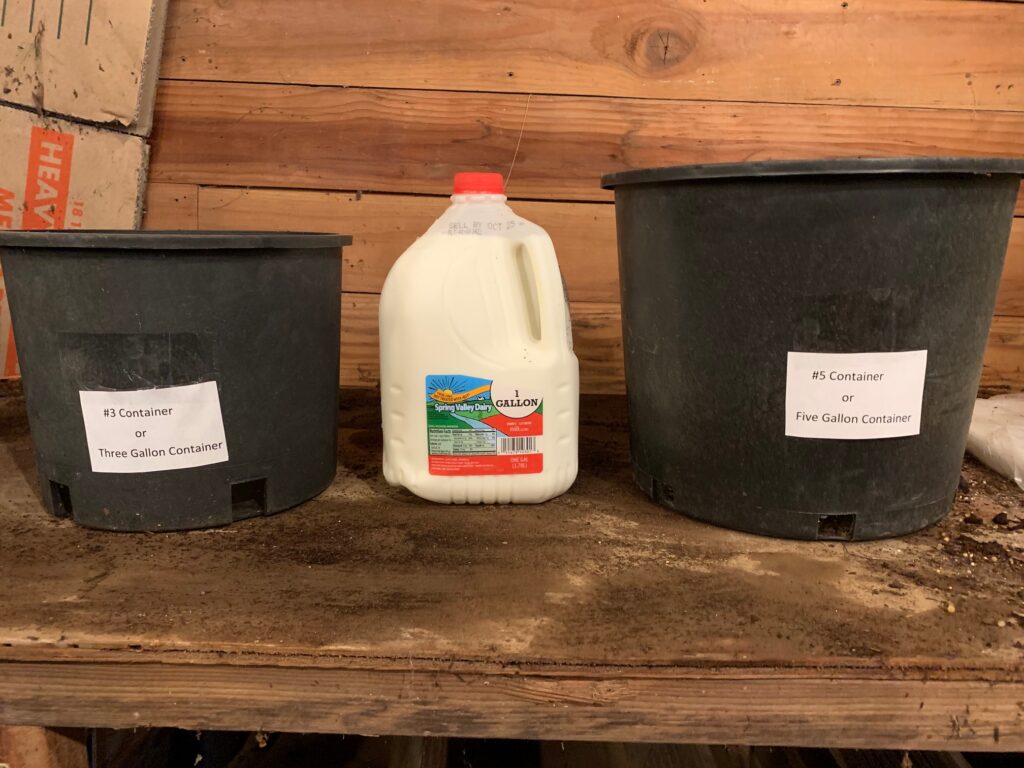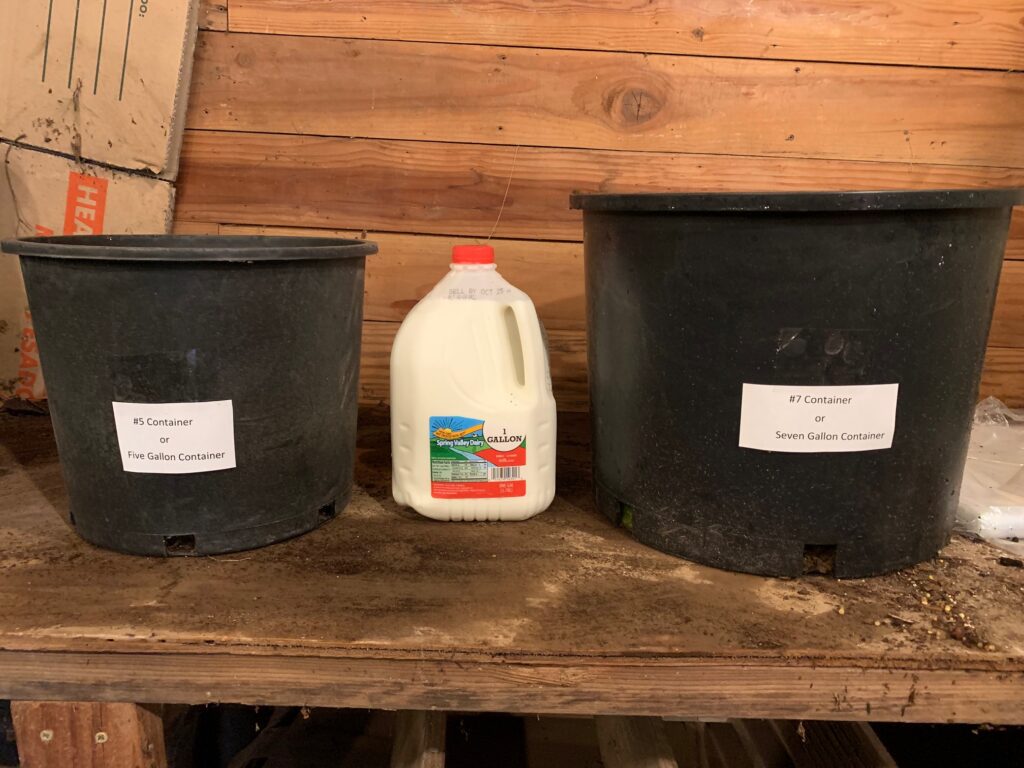It is a privilege to be able to work with so many of my
customers when they are having issues with their rhododendrons. I wish I could just stop by your yard and
have a conversation, but for most of the time we are limited to emails when there
are sometimes hours or days that go by between the time we get to
converse. I wanted to share with you an
article that was published by the American Rhododendron Society in 1994 by Jan
D. Kelley. I have shared this with many
customers already and I hope that this article can help in two different ways.
This article my help preventing some of the issues that can
occur later. I enclose planting
instructions with every plant we sell, but it does not cover the care of the
plant. Here are some Very, Very basic
steps as to what to avoid.
If your plant is struggling, you might find something in
this article that may aid you in changing the environment for your plant. I agree with the author that the great
majority of rhododendrons that I see struggle have been planted in an environment
that does not allow the soil to drain away excess water. I hope that article may help in a few
questions you may have. I am always
available via email for all questions!
Jim
https://www.rhododendron.org/v48n2p85.htm
Top Causes of Death in
Rhododendrons
Jan D. Kelley
Drain, Oregon
Our hopes soar with the coming of spring as we anticipate
another excellent growing season for our rhododendrons with their exquisite
flowers. As we ponder the fantastic new hybrids in the pages of the
several catalogs that we receive our vision of being successful gardeners
bursts forth. However, as you reflect upon last year’s plant losses a ray
of doubt creeps into your consciousness, and the nagging question emerges:
“Why did that plant die?”
For the past 15 years I have enjoyed raising
rhododendrons. During that period of time I believe that I have killed
rhododendrons in every conceivable way. In the remainder of this brief
article I would like to identify some of the various ways that rhododendrons
succumb in our yards and gardens. My experience indicates that most
rhododendrons die from about seven causes.
To begin with, excessive water kills about 75 percent of
all rhododendrons purchased. Rhododendrons are fibrous, shallow rooted
plants that need good drainage to perform well. Historically, gardeners
have been told to dig a hole twice as wide and twice as deep as the root ball.
After the hole is completed put the plant in the hole and back-fill it with a
mixture of peat, soil and other amendments. Many rhododendrons die from this
guidance. The result of digging the hole and planting the rhododendron in
it is nothing more than putting the plant in a bathtub that holds excessive
water. The continual presence of water around the root ball prevents the
roots from taking in vital oxygen as well as serving as an excellent incubation
chamber for fungus diseases. It seems that most of the native soils
around the country have an excessive amount of clay in them. The presence
of clay in the soil prevents good drainage, which is vital to the growth of the
rhododendrons. Anyone who has ever been to the several locations around the
world where rhododendrons originate knows that rhododendrons grow in shallow
beds of highly organic matter. The drainage is typically excellent.
Another cause of rhododendron death is lack of water.
Rhododendrons do not have taproots like trees: their roots grow very near the
surface. Therefore, they need frequent watering. The acquisition of
new plants in the spring requires regular watering. During the first
couple of years watering the plants at least twice a week is a must. As
the time goes by and the plants increase in size and root development, watering
less frequently works well. After about five or six years it is possible
to water weekly or even bi-weekly. Frequently sunburned leaves are the
result of the lack of water. For many varieties that have burned in the
sun in the past, the cause was lack of water not too much sun. Burned
tips on this year’s new growth is typically indicative of lack of water as the
plant withdraws water from the tips of the new foliage first.
Another cause of rhododendron death is the excessive
application of fertilizer. This is particularly true of applying
fertilizer directly at the base of the trunk of the plant. A good rule of
thumb is to fertilize more frequently with smaller amounts, rather than one
large dose. This is especially true for small plants or newly
transplanted plants.
A fourth reason for rhododendron death is planting too deep.
As indicated earlier, rhododendrons are shallow rooted plants. Their
roots grow just below the soil line. If they are placed too deep in the
ground, the soil that covers the roots serves to smother them. I have
found that planting too deep will basically stop the plant from growing.
Eventually this leads to the death of the plant.
Another reason that rhododendrons die is from cold winter
temperatures. Most rhododendron sources indicate the lowest
temperature range in which rhododendrons can be successfully grown. This
hardiness rating is a guide not an absolute! In general, the lowest
temperature during the past five years is a good guide for making selections
based on hardiness. Years ago there were very few plants that were hardy
in -25°F for the extreme climates. Now we have over 100 varieties that
will survive those winter temperatures. Gardeners in the East should
select hardy varieties in the beginning. With time and experience less
hardy varieties can be successfully tried. A rhododendron rated hardy to
5°F, no matter how beautiful it is, planted in Green Bay, Wisconsin, will not
survive.
As more and more home gardeners in the Southern and Midwestern
states begin to grow rhododendrons, increased attention must be paid to the hot
summer sun. Most varieties exposed to unprotected all-day sun are
doomed. However, there are available rhododendron varieties that can
stand direct sun. In general rhododendrons in extreme climates benefit
from filtered light and partial shade. Planting in a southern exposure
without any protection from the sun nearly guarantees plant death.
Finally, if you create the right conditions most rhododendrons
will be subject to fungus diseases. Typically we combine several
fungus diseases into a general category of “die-back.” The
results of the disease are seen during the late spring when the plant is just
beginning to grow and all of a sudden it drops dead. It is also seen
during the summer when a branch turns brown and dies. Frequently the
ailing plant will be lost. These phytophthora-type diseases are generally
the result of conditions created by the gardener, as it is believed that the disease
spores are present in the soil all over the country. Some of the ways
that we promote these organisms is by planting the rhododendron too deep, thus
providing a water culture for the development of the disease organisms.
Puddles of water that remain more than an hour after watering also harbor
disease. Watering in the late afternoon or evening encourages disease
development. Finally, failure to use fungicides during the late spring
and summer encourages the development of fungus.
In conclusion, you are not alone if you have lost plants to any
of the above mentioned causes of rhododendron death. Most of the causes
can be overcome with the intelligent selection of plants that are suited to
your geographical area. Finally, think about where and how you planted
your rhododendrons and what you did to promote their death.



